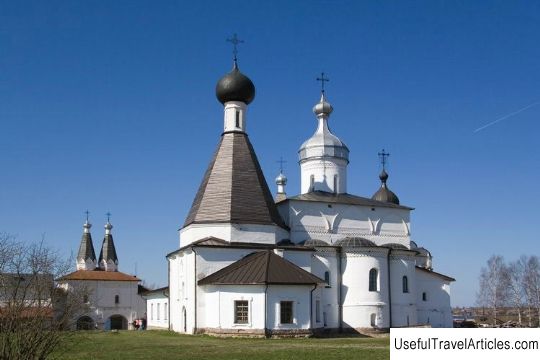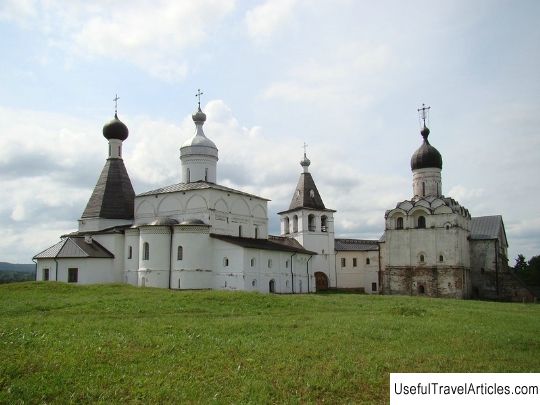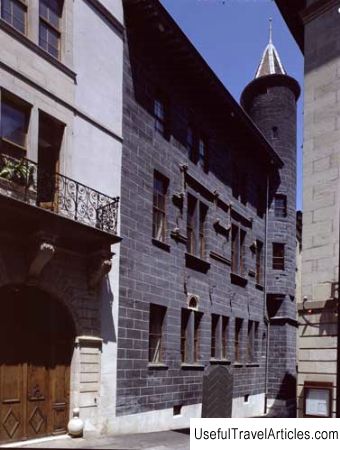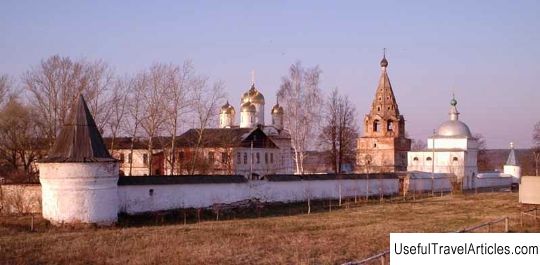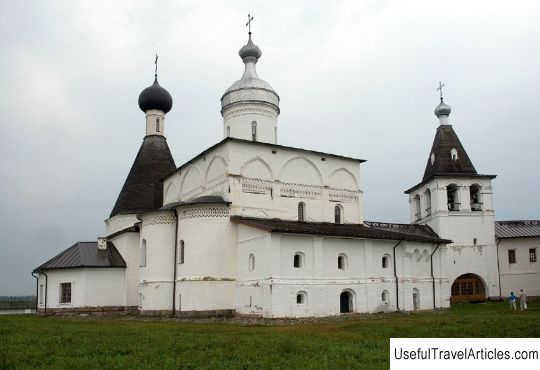Ferapontov monastery description and photo - Russia - North-West: Vologda region
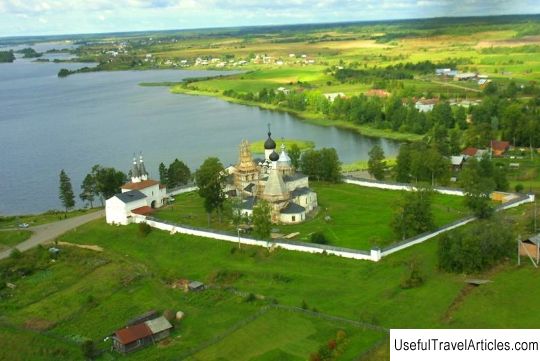
Ferapontov monastery description and photos - Russia - North-West: Vologda region. Detailed information about the attraction. Description, photos and a map showing the nearest significant objects. Photo and descriptionThe Ferapont Monastery was founded by an associate of the Monk Cyril of Belozersky - Saint Ferapont in 1938. The monastery is located 120 km from Vologda. The Ferapontov Monastery is small: four churches, a refectory, a bell tower and an official chamber are fenced off by a not very high brick fence. The monastery gained wide popularity thanks to the activities of the Monk Martinian, who is the confessor of Basil II. In the second half of the 15th - early 16th centuries, the monastery became an important spiritual, ideological and cultural center of Belozerye. The elders of the monastery had a serious impact on Moscow's policy. At the beginning of the XVII century. Ferapontov Monastery owned several villages, fifty villages, wastelands and peasants in the number of more than three hundred people. The ensemble of the monastery amazes with its quiet charm, cosiness, unity with nature. The first buildings of the monastery were built of wood. Stone buildings began to be erected at the end of the 15th century. The first to be erected was the Cathedral of the Nativity of the Mother of God, which was one of the first cathedrals built of stone in northern Russia. The cathedral is the most ancient building of the monastery. Dionysius, a famous and popular icon painter of that time, was engaged in the painting of the cathedral. Dionysius' sons helped paint the cathedral. The area of the painting on the walls of the cathedral is 600 sq. m. Pleasing to the eye are the soft colors of the painting and numerous subjects. The walls of the cathedral were painted in thirty-four days. The Nativity Cathedral seems extremely light, exquisite, slender. The western side is distinguished by a special outfit. The basis of her decoration is a decorative belt, two-tier lined with glittering tiled tiles. Above is a patterned cornice. The drum of the central chapter, as well as the kokoshniks and semicircles of the altar apses were generously processed. All types of decor are presented in their design - tiled belts, balusters, figured niches. Two-tier passages with a bell tower built in the middle are adjacent to the cathedral. They lead to the Church of the Annunciation, which was built in 1530-1534. It is a cube-shaped temple with one dome, divided into three tiers. The first, lower floor was occupied by utility pantries, the service room was located on the second floor, and the bell tower was located on the third. The completion of the temple was not quite usual either. The area of a high drum of a cylindrical shape, which was crowned with an elaborate head, grouped a bell tower, small rooms, having the purpose of "hiding places" and book depositories, communication routes. The main entrance to the monastery is the Holy Gate. They were built in 1649. Their main facade is colorful and decorated. Narrow and long windows are framed by elongated platbands with a keeled sharp top. Under the cornice there are patterned belts in two rows. The crown of mastery and talent of the architect is represented by tents, crafted with great taste. In 1614, the monastery was thoroughly plundered by the Poles. However, the monks managed to hide and preserve especially valuable shrines. Gradually, starting from the end of the 17th century, the monastery began to decline. The buildings of the monastery, one might say, are the only ones in the north of Russia that have preserved all the typical features of the interior and decor. By the decision of the Holy Synod in 1798, the monastery was closed. Many buildings have been destroyed or rebuilt. In 1904, the monastery began to function as a nunnery. It was closed again in 1923. In 1975, the formation of the museum began. Nowadays, it houses the Museum of Dionysius frescoes. Today these are the oldest surviving frescoes of ancient Russia.           We also recommend reading Festos and Agia Triada description and photos - Greece: Crete Topic: Ferapontov monastery description and photo - Russia - North-West: Vologda region. |
